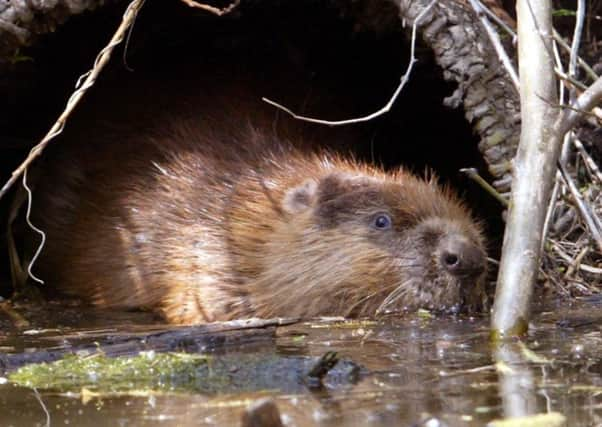Beavers '˜can save Scottish communities from flooding'


Some farmers have said the animals are to blame for flooding, but Paul Ramsay, who keeps the animals under licence on the Bamff Estate near Alyth, in Perthshire, says their dams would slow down severe flows before they reach towns and villages, stopping problems which have been seen across the country in the last month.
He said: “Beavers with their dams will tend to slow the water down. What happens at the moment is the time between the rain landing and getting down to the flood plain is very short – the water runs very fast off the hills and you get your flooding. But if you have something that is slowing the water down that means the peak part of the flood is going to be broader, more of a plateau.”
Advertisement
Hide AdAdvertisement
Hide AdThe claim comes after a University of Stirling study found beavers at Alyth in Perthshire last July were wrongly blamed for causing a catastrophe which left homes and shops over-run with water.
The Scottish Government is due to decide on whether the animal can be reintroduced across Scotland following a five-year trial at Knapdale in Argyll.
Wildlife writer Jim Crumley, the author of Nature’s Architect: The beaver’s return to our wild landscapes, said the animals were a great addition to the countryside. But he also said there were other steps that could be taken to stop flooding.
He said: “The range of benefits beavers confer on the natural world is almost limitless, and includes the capacity to mitigate flooding downstream by widening and slowing watercourses higher up. Their capacity to use upland woods to generate wide areas of shallow wetland also creates new opportunities for countless other creatures from bugs to birds and from plants to mammals.”
There has been some opposition to the idea of re-introduction of beavers to Scotland amid fears that their dam- building could disturb farmland.
An NFU Scotland spokesman said the organisation was working with the Scottish Government and Scottish Environmental Protection Agency (Sepa) on ways to deal with flooding. He said: “The dreadful flooding endured in parts of Scotland has left towns and villages counting the cost while on farmland, flood banks have been breached, fences and livestock lost and rubble and debris strewn over large areas of once productive ground.”
But he added: “It is disappointing that those seeking the reintroduction of beavers to Scotland should choose to use the devastation and misery caused by these weather events as an opportunity to promote their agenda of bringing back a species that hasn’t existed here for centuries.
“And far from being a solution, farmer experience of the illegal and uncontrolled release of beavers on Tayside is that it has exacerbated flooding issues in towns and country alike.”
Advertisement
Hide AdAdvertisement
Hide AdA Scottish Government spokesperson said the minister for the environment, Aileen McLeod, was “considering the issue carefully” before making a decision on the future of beavers in Scotland.
The £1 million Knapdale study was commissioned and co-ordinated by Scottish National Heritage.